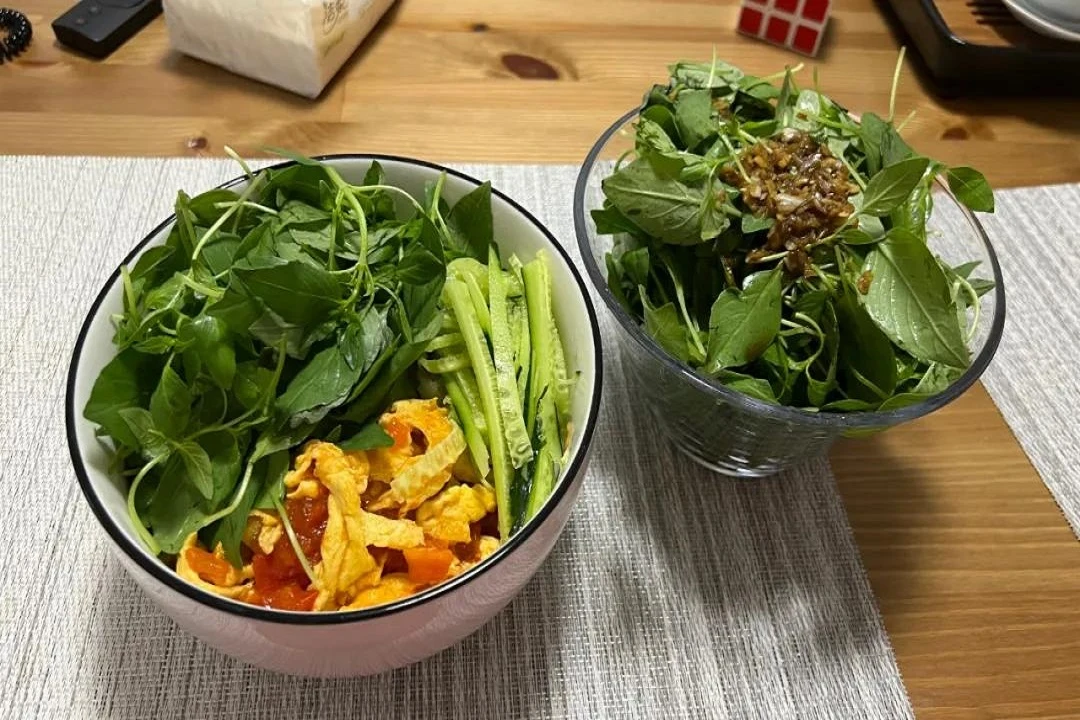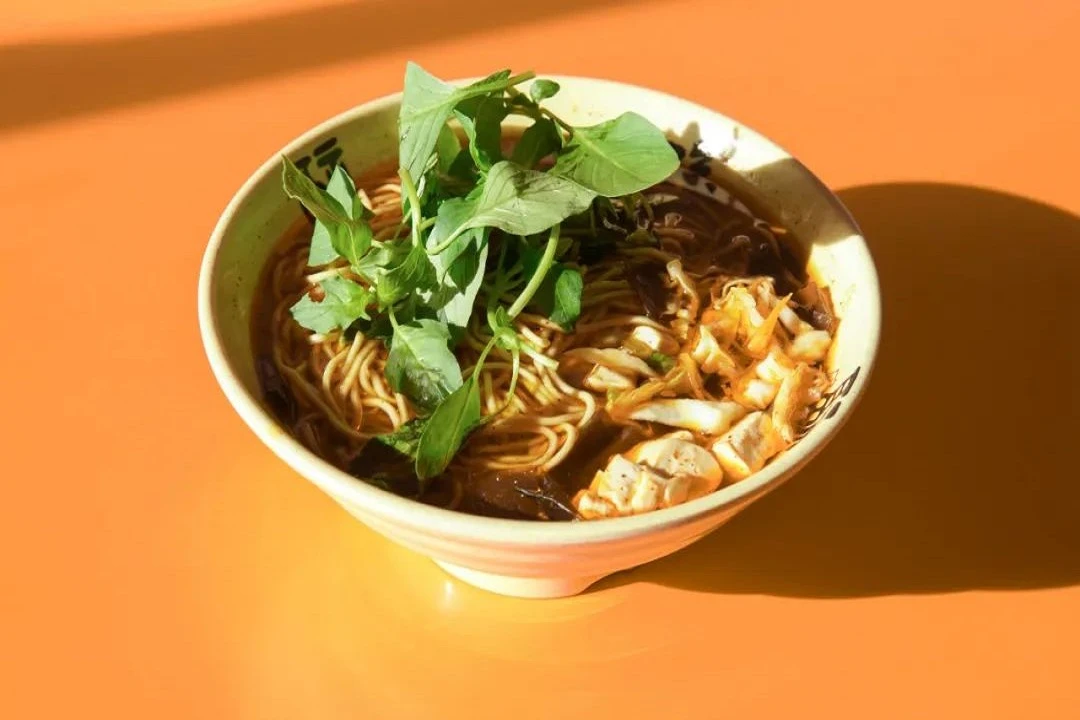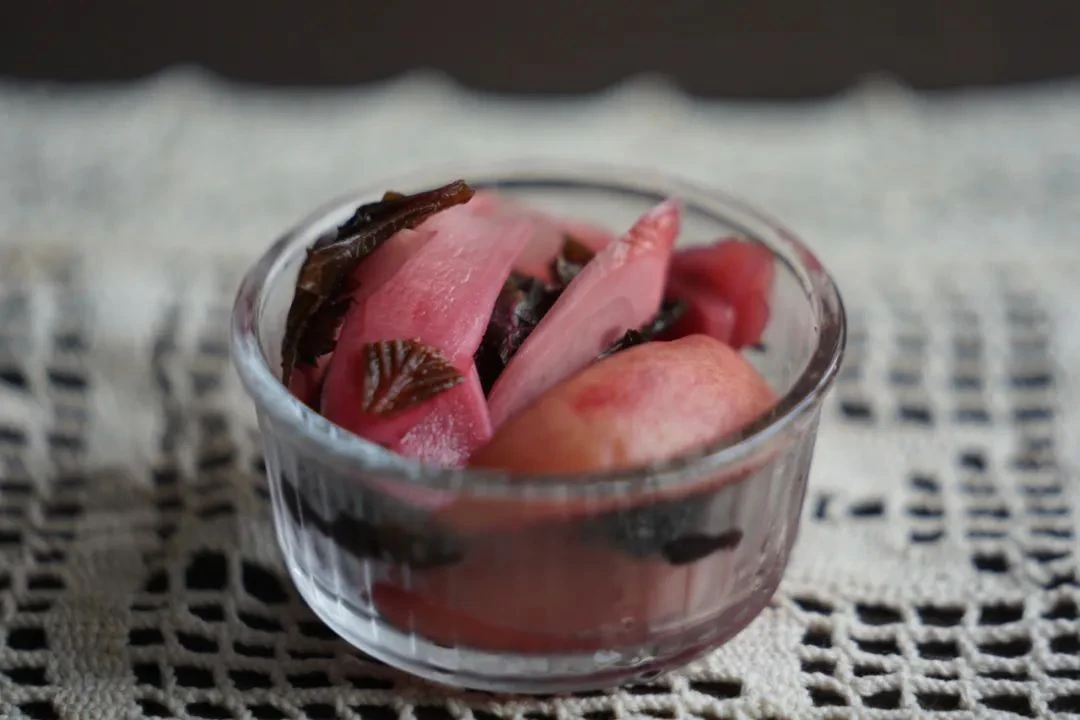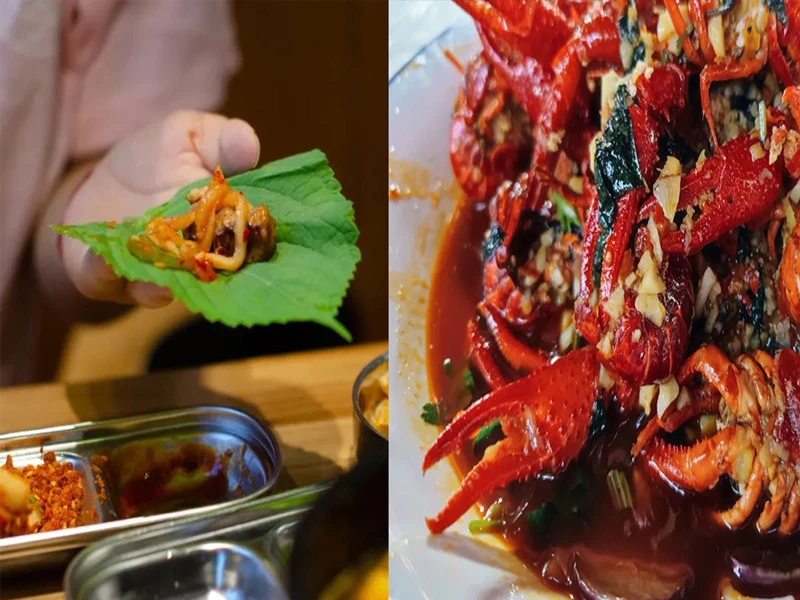When Henan natives venture beyond their provincial borders, they often encounter a surprising realization: does anyone outside of Henan eat "Jingjie (荆芥) "?
"Jingjie," a seemingly ordinary green leafy vegetable, holds a sacred place in the hearts of Henan people during the summer months. Despite being treasured locally, Jingjie remains relatively unknown outside Henan, prompting queries like, "What exactly is Jingjie? Is it catnip?"
Understanding Jingjie
Firstly, Jingjie is not catnip! Botanically classified under the basil genus, Jingjie's taste is akin to a blend of mint and lemon, offering a refreshing, slightly pungent flavor profile.
Henan locals adore Jingjie for its versatility. It is commonly enjoyed cold, tossed with cucumbers, cold noodles, or in salads. For hot dishes, it can be steamed with flour coating, stir-fried with eggs, or used as a noodle topping. Its unique aroma and taste not only refresh in the summer but also stimulate appetite.

Culinary Delights and Cultural Significance
For Henan natives, Jingjie is more than a vegetable; it symbolizes hometown flavors cherished by those far from home. It has even inspired local brands like "Juantea (眷茶) " to create a popular beverage—Jingjie Lemon Tea, renowned for its distinctive local charm.
However, not all Henan locals share the same affection for Jingjie. Just as not everyone can appreciate "Zhe'er Gen (折耳根) " Chinese knotweed, "Mujingzi (木姜子) " Fructus Acanthopanacis or cilantro, Jingjie's appeal is subjective and deeply rooted in regional culinary traditions.
Nostalgia and Culinary Heritage
The tastes that are hard to come by once leaving one's hometown, those that evoke memories with just one bite, include not only Henan's Jingjie but also Sichuan's Huoxiang (Agastache rugosa), Hunan's Zisu (Perilla), Inner Mongolia's Shacong (Allium mongolicum Regel), and Xinjiang's Huangluobo (Yellow Turnip). These flavors, though not as widely recognized as Zhe'er Gen and Mujingzi, each possess a unique charm.
Hunan's Purple Perilla: A Fresh Contrast in Spice
My first taste of purple perilla was at a crawfish restaurant in Changsha. Amidst the fiery spices, local friends recommended a side of pickled peaches with ginger and perilla leaves.
The crisp sweetness of pickled peaches and the coarse texture of perilla leaves infused in sugar water added a unique dimension to the dish. However, perilla finds its primary use in Hunanese cuisine.
From spicy shrimp to snail stir-fry, grilled fish, and bullfrog, perilla enhances flavors with its rough texture, balancing heavy seasonings for a distinctive culinary experience.
Sichuan's Huoxiang: Perfect Match with Freshwater Fish
Fresh huoxiang (藿香) leaves carry a faint herbal scent besides their exotic aroma. Sichuanese cuisine mainly incorporates huoxiang into various freshwater fish dishes to neutralize their fishiness and enhance freshness.
Huoxiang fish involves pan-frying the fish, then briefly simmering it in a soup made with doubanjiang (broad bean paste) and water before garnishing with chopped huoxiang leaves. This dish blends diverse flavors harmoniously.
Apart from fish, huoxiang also flavors hotpot bases, often combined with sauerkraut and wild peppers to create a refreshing alternative to the traditional spicy hotpot.
Guangdong's Sesame Leaves: Adding Texture with Fibrous Appeal
In gastronomically adventurous Guangdong, leafy greens like jiucengta (nine-layered pagoda), sesame leaves, and watercress carry a distinctive Cantonese stamp.
Sesame leaves from the broadleaf hollyhock need blanching before use. They're commonly stir-fried or served cold as a side dish with rice or congee, adding a unique charm to daily meals. They can also be paired with noodles, enhancing everyday cuisine with their fibrous appeal.
Contrasting with the robustness of sesame leaves, watercress takes a lighter approach. Imported from abroad, it's immensely popular in Guangdong, easy to eat with minimal fiber, offering a refreshing crunch perfect for hot pot or soup.
Inner Mongolia's Scallion-like Charm: Sand Scallions
Inner Mongolia boasts its unique vegetable representative—sand scallions. Despite their name, they taste nothing like regular scallions and resemble garlic chives in appearance, offering a crisp and slightly sweet bite.
Sand scallions are enjoyed pickled, cold, stir-fried, or in dumplings, enhancing dishes like beef and lamb with their refreshing crunch and additional plant-based flavors.
Xinjiang's Yellow Radish: Ubiquitous Sweetness of Pear Apples
In the treasure trove of Xinjiang lies a vegetable known as yellow radish, more flavorful than carrots due to its high sugar content from growing in sandy soil, making it ideal for eating raw like a fruit or adding to pilaf as a defining ingredient.
In addition to the yellow radish, there's the commonly known onion, which, despite not being a niche vegetable, is an indispensable part of Xinjiang's daily diet, contributing to its rich flavor in everyday dishes.
Ultimately, these local vegetables serve as more than just ingredients—they are gateways to fond memories and a sense of belonging. Whether it's jingjie in Henan or any other regional delicacy across China, these flavors not only tantalize the taste buds but also evoke a deep connection to one's roots and upbringing. Each bite is a journey back home, a reminder of the warmth and comfort found in the familiar tastes of one's "hometown flavor."



